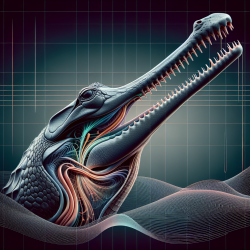The intricate world of nasal anatomy offers a wealth of insights that can be applied to various therapeutic practices. Recent research on the Indian gharial (Gavialis gangeticus) provides an intriguing look into how septal deviation affects nasal airflow and acoustics. This study not only enhances our understanding of this unique species but also opens avenues for practitioners to refine their skills and consider new research directions.
The Fascinating Anatomy of the Gharial
The Indian gharial, known for its elongated snout, presents a unique challenge in terms of nasal physiology. The research article titled "Septal deviation in the nose of the longest faced crocodylian" delves into this subject by examining multiple gharials, including one with a pronounced septal deviation. This condition results in increased nasal resistance and uneven air distribution, affecting both respiration and acoustics.
Key Findings
- The gharial's nostrils and choanae are confluent, which may influence its distinctive nasal acoustics.
- A deviated nasal septum leads to increased wall shear stress and uneven airflow distribution.
- Pterygoid bullae are present in both sexes, with differences in morphology potentially affecting sound production.
Implications for Practitioners
This research holds significant implications for practitioners working with individuals experiencing nasal passage abnormalities. By understanding how septal deviations affect airflow, therapists can better tailor interventions for conditions such as chronic sinusitis or other respiratory issues. The use of computational fluid dynamics (CFD) in this study highlights the potential for similar techniques to be applied in human therapy settings.
Encouraging Further Research
The study encourages practitioners to delve deeper into the relationship between nasal anatomy and function. Exploring how these findings can be translated into human therapies could lead to innovative treatment approaches. Additionally, understanding the role of acoustics in nasal passages might offer new insights into speech therapy techniques.
A Call to Action
This research serves as a reminder of the interconnectedness of biology and therapy. By embracing interdisciplinary studies, practitioners can enhance their skills and contribute to groundbreaking advancements in therapeutic practices. For those interested in exploring this topic further, I encourage you to read the original research paper.










